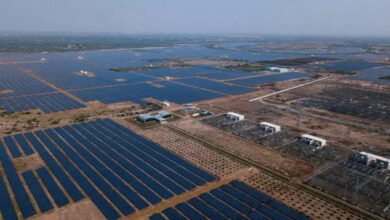India’s real estate market set to soar with $1 trillion in sales forecasted by 2030
India's real estate sector rebounds with robust demand following Covid-19 challenges.

India’s real estate market has emerged as one of the most vibrant and rapidly expanding sectors globally. Although it faced unprecedented challenges due to the pandemic between 2020 and 2022, it has demonstrated remarkable resilience and bounced back at a commendable pace. The sector has witnessed a resurgence in demand, outperforming many other real estate markets worldwide.
A recent industry report highlights the significant growth potential of India’s real estate market, projecting a staggering $1 trillion worth of real estate sales by 2030. The sector is expected to make a substantial contribution to the country’s gross domestic product (GDP), with an estimated 13 percent share by 2025. This remarkable boom in the real estate market can be attributed to several key factors.
India stands out as one of the most urbanized nations globally, with more than half of its population residing in cities. This urbanization trend is expected to persist as more individuals relocate to metropolitan areas in search of improved job prospects and a better quality of life.
The rapid growth of India’s middle class has also played a pivotal role in the booming real estate market. With an increasing number of people attaining higher income levels, there is a growing demand for property ownership, particularly in the affordable and mid-range segments.
Significant investments in infrastructure development by the government have further contributed to the attractiveness of city living and working. The availability of well-developed infrastructure has become a key factor driving real estate demand, as people show a preference for locations with robust amenities.
In addition to domestic buyers, foreign investors are also recognizing India as an appealing destination for real estate investments. This interest can be attributed to various factors, including the nation’s strong economic growth, rising disposable incomes, and a favorable investment climate.
Overall, these factors have fueled the growth of India’s real estate market, positioning it as a promising sector for future growth and development.
In order to boost the real estate market, the government has implemented various incentives such as tax reductions and subsidies for homebuyers. These measures have created a favorable environment for real estate investment.
Integrated living has gained significant popularity in the residential sector, as homebuyers increasingly prefer developments that offer a wide range of amenities. These amenities may include office buildings, parks, schools, hospitals, and shopping centers with multiplexes.
Homebuyers now seek a lifestyle characterized by tranquility, independence, and security. As a result, the demand for township living has experienced a positive growth trajectory and is expected to continue in 2023. Township living caters to the social, civic, and recreational needs of residents, while also providing multi-layered security systems.
Overall, these trends reflect a shift in homebuyers’ preferences towards holistic and well-equipped living spaces, supported by government incentives, which are driving the growth of the real estate market.
In 2023, real estate investors are expected to focus their investments primarily on suburban zones. These suburban areas have witnessed a steady influx of migrants from outside the city due to various factors such as the establishment of IT special economic zones, the presence of reputable educational institutions, and the availability of essential amenities. These factors have contributed to the attractiveness of these micro-markets. Furthermore, improved commuter connections have enhanced the accessibility of these suburbs to the rest of the city, making them a popular choice among homebuyers.
The micro-markets in the suburbs are highly sought after in the real estate market due to the availability of properties at more affordable prices compared to those in major cities. Despite being reasonably priced, these properties offer convenient proximity to essential facilities and amenities, making them an appealing option for potential homeowners.
The appeal of homeownership as a long-term investment strategy has reached new heights, with a notable increase in second-home purchases observed in 2021. Individuals have come to recognize the numerous advantages of real estate investing and now perceive it as a stable and secure form of investment.
In the upcoming year, the real estate market is projected to experience significant growth in investment activity, driven by the perception that it is less volatile compared to other investment markets and offers the potential for higher returns.
In India, there has been a noticeable shift in the preferences of property buyers, with a significant growth observed in the individual villa category as lifestyles have evolved. This trend can be attributed to the increasing demand for low-density living experiences.
The decision to opt for independent residences over apartments is driven by various factors, including the desire for capital growth and the growing preference for open spaces. As a result, prospective homeowners are increasingly choosing single-family homes, leading to a surge in demand for plotted developments in the outskirts of major cities.
The rising demand has created opportunities for more organized developers to enter the plotted development segment of the real estate market.
These factors, along with the vibrant professional class and well-established corporate ecosystems in cities like Mumbai, Delhi, Bengaluru, and Kolkata, are fueling the growth of real estate in India. Additionally, the expanding co-working segment has brought increased focus on commercial real estate, which is expected to thrive in the years ahead. It is evident that the preferences of homebuyers are evolving with the changing times.
Homebuyers in India are increasingly seeking smart flexi-homes nestled in lush green surroundings, leading to the growth of two specific segments in the real estate market – peripheral suburbs and self-sustained townships. This trend bodes well for real estate developers who have diversified their portfolios and possess the necessary expertise to enhance value and seize opportunities in both favorable and challenging market conditions.
The future holds promise for these industry players who can cater to the evolving preferences of homebuyers and capitalize on the potential of these thriving segments.



